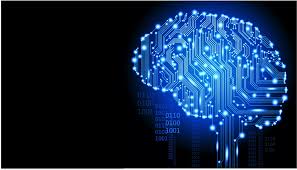Source – forbes.com
We humans generally like to pride ourselves on our ability to be unpredictable, to do things for no other reason than because we want to. The truth is, we are complicated, but with the emergence of deep learning, we may become more predictable.
The theory goes something like this: In the past, people’s behavior was generally considered to be unpredictable because we had no way of tracking and analyzing everything that goes into our decision-making processes. Now, with sophisticated computer systems, deep learning and the ability to store vast amounts of data, we can begin to parse that information to find patterns in the ways people operate.
The question that every marketer asks themselves daily is: How can I find more people that want to buy my products? For a decade, the answer has been data. Most marketers, however, have only seen modest gains with data collection because there is too much to make sense of.
Think about all the decision making that goes into choosing where to eat for lunch. Some people go to the same place every day. But if they’re like me, they make a game-time decision on what they’ll eat for lunch. Living and working in New York City, I can choose between nearly every cuisine (Indian, Chinese, pizza, etc.) and every type of restaurant (fast, slow, fancy, casual). Needless to say, it’s much more difficult to accurately predict my lunch than the other person’s.
Let’s say that someone somewhere has been keeping tabs on where I’ve eaten for the last six months. That person might be able to predict my next meal, but chances are, it won’t be all that accurate. After all, there are so many factors that go into how I choose my meal — from what I ate for breakfast to whether or not I saw an ad for fried chicken that morning on my phone (in which case, Popeye’s might be getting some business from me). Even assuming that the all-seeing overseer of my lunch habits has data on what I eat for breakfast and dinner, when and how often I go to the gym, whether I was out late last night, my sleeping habits, the weather, what ads I saw on my phone and so on, there are so many variables that it would take ages for that person to find a pattern — if one even exists.
And that’s just my data. If a marketer really wanted to understand people’s eating habits on a larger scale, they’d need to gather all of this information from millions of people. This is the kind of problem that has kept most marketing executives up at night. But with deep learning, they can finally rest easy. We are now in an era where gargantuan amounts of data can be coupled with the power of deep learning to finally make a marketer’s data-driven dreams come true.
So, now we have eating and daily habit data on tons of people. Along comes Jeremy’s Hot Dog Stand: A huge success on its little corner of midtown New York, Jeremy’s is now rolling out carts all around the city. In order to attract new customers, we use our existing customers to build an algorithm that predicts which other people will want our hot dogs.
The thousand customers that ate our hot dogs last month are a diverse group, and we plug all of their data from the last six months into our deep learning platform. Out comes a deep neural network algorithm that is good at recognizing someone who likes our hot dogs. Now, we can start entering data on the eating habits of the millions of other people who are not yet customers so that our neural network can tell us how likely each person is to be a future customer. With that information, I can create a list of the people who are most likely to enjoy our hot dogs and target them with ads. That way, I don’t have to waste my money advertising to people unlikely to convert.
Even more impressively, I can dynamically bid different amounts for every single one of the millions I’ve scored. So even if someone has a low probability score from my neural network, I can decide to spend a little on them to see if my model can learn something. Within six months, Jeremy’s Hot Dog Stand has become a national success!
Of course, the power of deep learning can do more than just power a hot dog stand to success. Retailers can use deep learning to target those most likely to visit their stores. Financial institutions may be able to employ deep learning in order to improve future performance. And advertisers across all fields can harness deep learning to find the people who are likely to buy what they’re selling. This is why deep learning is exponentially valuable to the typical business.
While it might seem daunting to build a neural network or deep-learning platform from scratch, marketers should keep in mind that there are numerous tools out there, from established players such as IBM and Amazon to small startups, that can help them harness the insights of big data and deep learning.
That is essentially what marketing is about — anticipating people’s needs and future behavior. Thanks to the rise of big data and the development of advanced machine-learning technologies, including deep learning, predicting human behavior more accurately has finally become possible. Instead of relying on generalized observations meant to apply to as many people as possible, marketers can build their own deep-learning platforms or rely on tools that will allow them to personalize marketing approaches in order to best appeal to all the individuals, no matter how diverse, that will buy their products. Instead of choosing a specific demographic (males, 18-49, with income over $50,000), they can just choose “People who will buy my product.”
